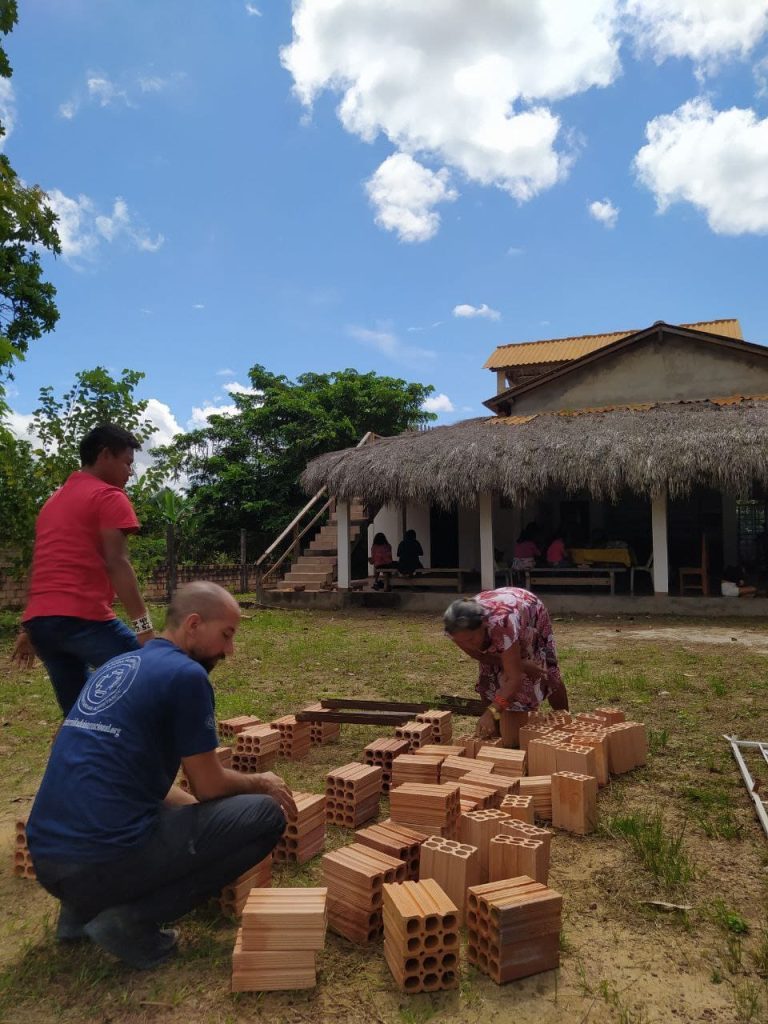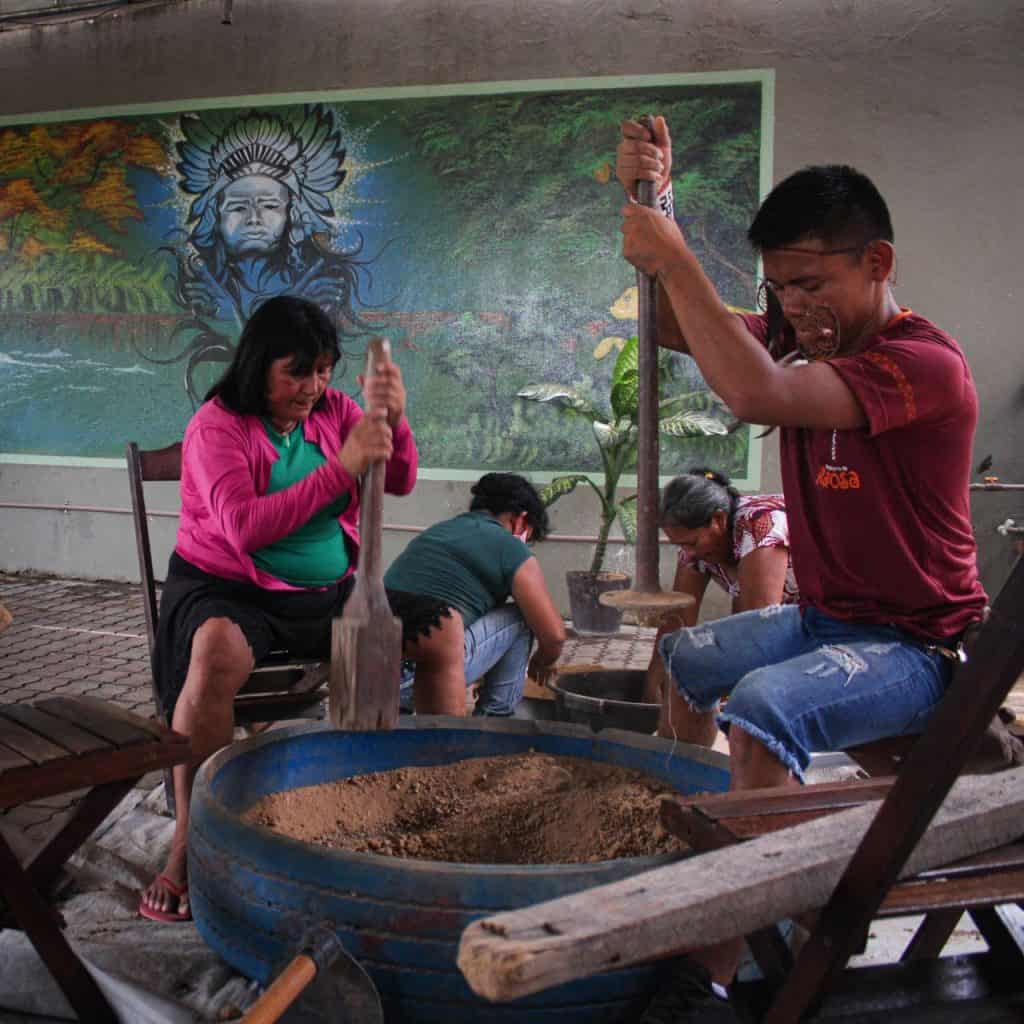In December, another “Clay Pots” workshop took place at the Indigenous Cultural and Training Centre (CCFI), as a way of continuing the workshop developed in August of this year, a joint effort between the Federal University of Roraima (UFRR) and the Fraternity – International Humanitarian Federation (FIHF).
The activity aimed to improve the techniques learned in the first workshop and provide a collective production space for commercialization. The ancestral technique of making clay utensils was transmitted by Macuxi indigenous potters from the Raposa Community I belonging to the Raposa Serra do Sol Indigenous Land, in the municipality of Normandia, Roraima, Brazil. Thirteen indigenous people from the Warao, Ye’kwana and Macuxi ethnic groups participated, producing about fifty different utilitarian pieces.



In addition to strengthening ecological and cultural forms of income generation, this work aims to contribute to the affirmation of indigenous identity, the appreciation of culture and the exchange of knowledge and experiences between indigenous peoples of different Brazilian and Venezuelan ethnic groups, with the revitalization of the indigenous perspective to perceive nature and everything that composes it as something sacred.
Daiana Soares, a professor at the Department of Arts at the Federal University of Roraima, is developing doctoral research on Macuxi ceramics, working with the cosmological question of clay, Vovó Barro, as it is considered by these indigenous people. Daiana emphasized the importance of this workshop: “Today, the purpose of having taught the ancient clay techniques in the first workshop is being fulfilled. Today we have the opportunity for other people to resume these techniques, which I believe their ancestors used to do, but which have remained dormant. We see this through the skill of the Warao and Ye’kwana people.” Professor Daiana also emphasized the difficulty of estimating the value of these works, whose elaboration involves everything from going up the mountain to collect, returning carrying the material, drying it in the sun, pillaring, sifting, wetting and making the dough, modeling, polishing, and even preheat and burn it; in addition to the existence of a series of spiritual rules to achieve a good result.
As an example of these guidelines, Joana de Souza Fidelis, a Macuxi potter from the Raposa Community I, explained that “you have to remove the clay at the right time, you have to be patient; when it has a lot of order and worry, it starts to crack and break. The customer doesn’t understand. Joana pointed out that in the beginning she only made the pots to maintain the culture, as this tradition was being lost. Later, with the growing increase in demand, she began to market and expand production.



Faced with the cultural, ecological and economic potential of indigenous ceramics, this second workshop showed the repercussions and results of the work carried out, with continuation and expansion encouraging joint production, and providing orientation, follow-up and all the necessary conditions for a good elaboration, including adequate spaces, artisan oven and supply of materials, including the clay itself. Boris Puerto, worker of the Humanitarian Fraternity clarified that “In the first workshop they acquired the techniques and today we can see them conquering autonomy, with production for commercialization. Skills and creativity also emerge, with the creation of different models, for in addition to traditional pots, more contemporary varieties are made, with handles and lids, as well as other utensils, such as plates, cups and bowls.”
Watch the videos about the Clay Pot Workshops:





